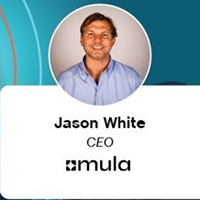2007 is approaching and some of us might be thinking about our personal New Year’s resolutions. Maybe you want to get back to the gym, pay off your credit cards – or, if you’re really ambitious — try to become a better all-around person.
But what about your business resolutions? More specifically, what about your digital marketing resolutions? When it comes to e-mail marketing, there are a few clear areas where many marketers have room for improvement. As you develop your 2007 strategy, now is the time to commit to a few important e-mail marketing principles.
Collect and integrate all customer data. The breadth, depth and quality of your data are your largest drivers of success. You need to be on top of your e-mail data collection – for example, are you collecting all your e-mail registrations? Do you know when and where an address was added to your database? Are you capturing customer promotion history? Do you have data quality processes in place?
What about mining your data for relevant and actionable insights? For example, conducting a behavioral analysis of your file will tell you how your customers respond over time. Do you have tools and processes in place to derive such insights?
Finally, is your e-mail database interconnected with other customer data sources like transactional databases, both online and offline, and market research databases? Rather than over-using the same personalization data every time (e.g. the user’s birthday or favorite magazine), broaden the scope of information on which you can personalize e-mail offers. For example, reference the make and model of a consumer’s car or suggest an accessory product based on a past purchase.
Review your engagement strategy. An effective and timely customer engagement strategy can improve your deliverability. If you wait even one week to engage after someone subscribes to your list, you risk your customer forgetting their subscription and reporting your message as spam. It’s important to evaluate whether you’re connecting with your customers at the right time (i.e. day one). For example, do you send them an automated welcome message when they sign-up for your e-mails? Do you follow that message up with tips and recommendations based on their interests?
A strong engagement strategy is a great way to begin a triggered dialogue based on your behavioral analysis. A triggered message is an automatic messages based on customer events or actions. If there’s a significant withdrawal from your customer’s bank account, or unusual account activity, why not send them an account alert e-mail? Better to be safe than sorry. Triggered messages represent a real-time dialogue with your customers based on specific events and can both serve to cement your relationship as well as generate important goodwill.
Try a new segmentation strategy based on customer behavior. It’s important to classify customers into segments based on their expectations and behavior, and then tailor your marketing to the different needs of these segments. For your frequent clickers, try offering free gifts with purchases; for the non-responder segment, discounts or free shipping might help lasso them in. What about all those shopping cart abandoners? Send them a timely remarketing message offering free shipping (high shipping charges are one of the most common reasons a shopper abandons their cart).
Run A/B tests to assess your creative. What could be more important than knowing if your e-mail creative is working? Don’t be afraid to make changes; you won’t be tossing out your entire investment. Sometimes, very small adjustments can have a big impact on response rates. Our internal research shows that adjusting the delivery rates, subject line and/or from line can improve conversions up to 10%. However, adjusting the creative can improve conversions between 10 and 50%.
For example, do you know if your creative is optimized for image blocking? Some ISPs will block images on e-mails to protect their customers’ from unwanted large files. There are ways to repurpose the e-mail so it still makes sense and looks attractive to the recipient if you have the right optimization tools in place.
One client wanted to convert its 30-day trial subscribers into full-time subscribers. Through an A/B test strategy of the creative (comparing performance of one draft creative against another), we introduced a new creative strategy that placed the offer at the top of the e-mail in text format so it appeared in the preview pane and was not blocked by e-mail applications. The results yielded a 41% lift in response rates and a lifetime value of over $300,000. Pretty good results from a relatively minor creative adjustment.
Leverage RSS to fight list fatigue. RSS is a web feed format used to publish frequently updated pages, such as blogs or news feeds, and push them out to users who opt-in for such information. Are your customers adopting this emerging channel? A recent Bluestreak study: “Emerging Digital Channels: Consumer Adoption, Attitudes & Behavior,” showed that 28% of respondents from a pool of 1,000 eRewards panelists are using RSS (Really Simple Syndication). That’s a fairly healthy number for a relatively new platform. E-mail list fatigue is a growing problem, and you may have a number of inactive subscribers who no longer click on your e-mails. So, ask yourself how RSS can complement your e-mail program. You might be able to reach customers bored with or overwhelmed by e-mail on this exciting new channel.
Don’t listen to the hype — RSS adoption is not having a negative impact on e-mail performance. These channels will co-exist. The question all marketers must ask is, “am I ready to respond to customers who want to connect with RSS?” I predict that 2007 will be a year of rapid adoption for RSS and marketers who have a strategy in place will win.
Overall, if you adopt these five New Year’s resolutions into your 2007 marketing plan, or even any number of them, I can almost guarantee you will make a profound impact on the success of your e-mail marketing program. Hey, maybe you’ll even have more time to hit the gym.
Eamon O Neill is vice president, product management at Bluestreak.
 Network
Network

